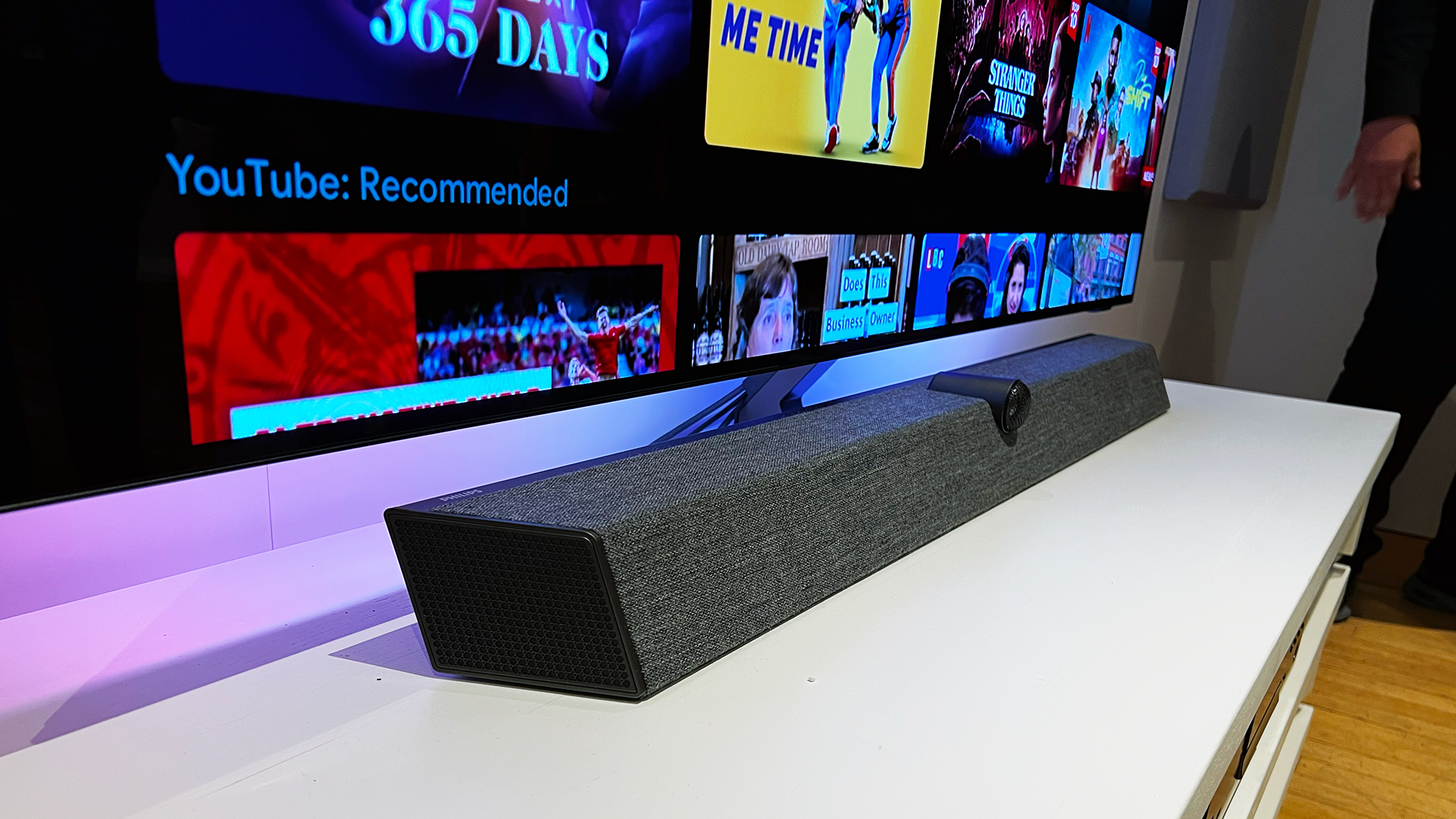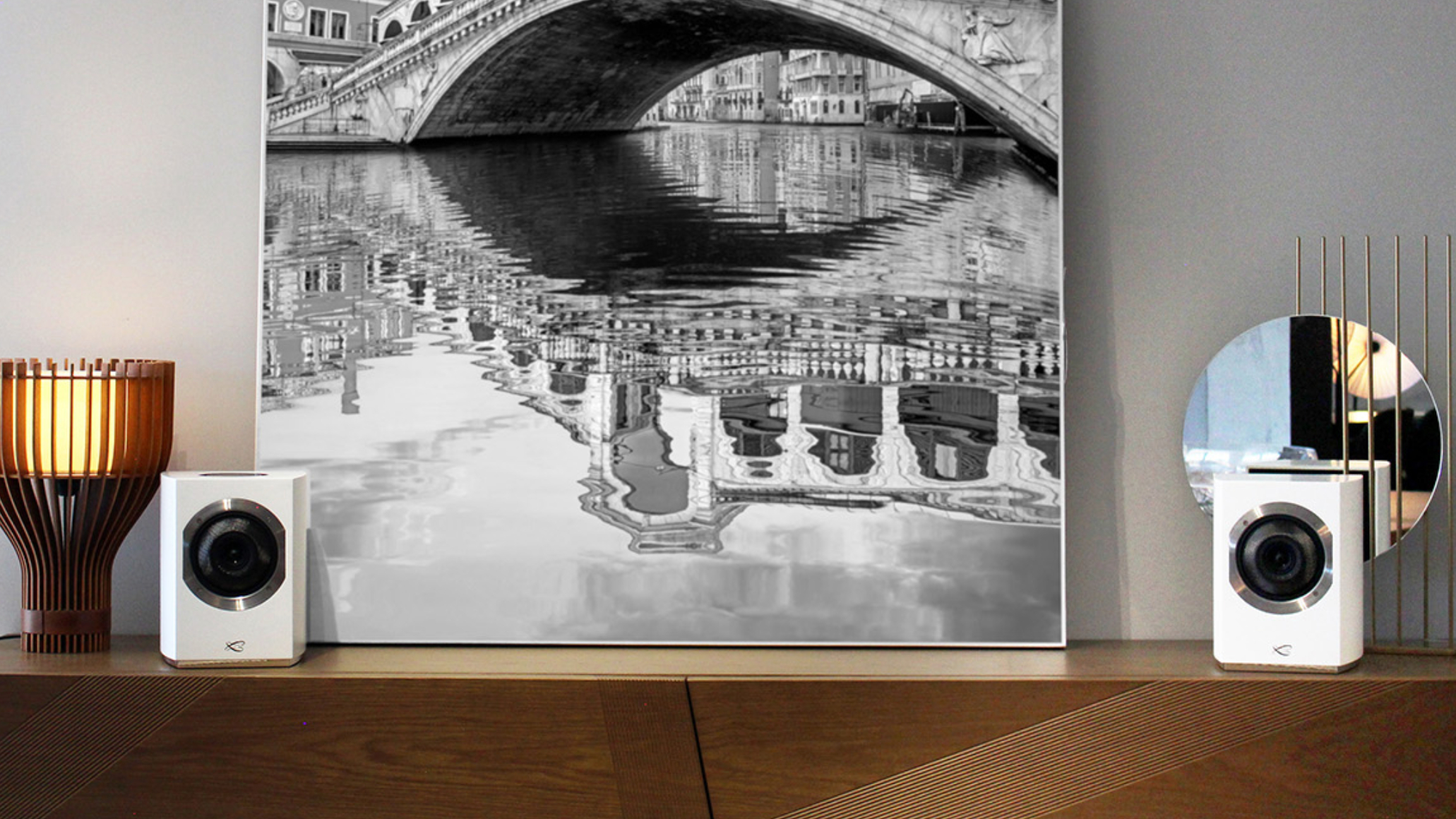How to make your TV sound better
Modern TVs don’t always sound as great as they look, but you can change that

There’s no doubt about the fact that modern TVs have upgraded dramatically in the 4K era for picture quality, aesthetics, and features. However, while enhancing their looks, manufacturers often end up compromising their sound quality.
Today's TVs sport slim bodies and thin bezels, which means they don’t have sufficient room for large speakers that can move a lot of air. Moreover, the speakers that modern TVs host are either pushed to the back or the bottom. Naturally, downward-firing speakers do not sound as clear to you as forward-firing speakers.
This makes it necessary for users to look at other options to make their TV sound better, including sometimes looking specifically for the best TVs for sound, or adding one of the best soundbars to their setup. But those aren't always necessary – so let's go over all your options, from making more of what you have to adding a new solution to the problem.
1. Try tweaking your TV’s settings
The simplest thing you can begin with would be to first check your device’s audio settings. We often ignore that part and it is quite possible that your dissatisfaction with the audio could be fixed by just tweaking a few settings. It can be helpful to cycle through modes to see which one suits your needs best. If the sound of people speaking is too muffled for you, you might want to switch to a mode that enhances speech, for example – look for a Dialog or Speech mode.
Some TVs, such as the LG C2, have an AI-enhanced mode that really makes the most of how their specific internal speakers are designed, and this can be better than using a 'Dolby Atmos mode' or a 'Movie mode'.
Other settings include making sure your bass isn’t turned all the way up. Heavy bass tends to mess sound up by affecting its clarity. You can use the bass slider to tone it down and see if that fixes anything. Similarly, try increasing the treble to see if it improves speech. High treble often results in a clearer dialog. Or you might want to try the reverse – adding more bass to make movies sound fuller.
You can also always play with the presets on your device such as Bass Boost, Treble Boost, Surround Sound, etc. Tweaking your TV’s sound settings essentially involves tinkering with its options to see if the problem can at least be minimized, if not solved.
Sign up for breaking news, reviews, opinion, top tech deals, and more.

2. Consider buying a soundbar
If playing with the audio settings on your existing TV doesn’t work for you, your best bet is to invest in a soundbar. Doing so will make sure that the level of immersion you’re getting in terms of audio matches the video. A soundbar also takes significantly less space than a full surround sound system and is easier on your pocket as well. The tons of options available in the market cater to various budgets.
The Sony HT-S400 is an example of an affordable soundbar with a subwoofer. It comes with a low price tag, but you won’t get Dolby Atmos support. Hence, don’t expect the kind of positional sound a pricier soundbar would be able to deliver. Though, for its price, the HT-S400 offers excellent sound quality and an appealing body.
The Samsung HW-Q800A is great as a midrange option. Featuring an attractive body, this soundbar features powerful and immersive sound. Its bass is quite punchy too, all thanks to its subwoofer. In terms of connectivity, the HW-Q800A sports eARC passthrough, hence, promising a hassle-free setup. It also facilitates optical digital, Wi-Fi, and Bluetooth connectivity.
Samsung’s HW-Q990B is our pick for a high-end soundbar featuring Dolby Atmos. It features brilliant sound positioning along with great connectivity. The HW-Q990B packs one HDMI eARC, two HDMI, and one optical digital port along with options for Bluetooth and Wi-Fi connectivity as well. For more recommendations, feel free to check out our guide on the best Dolby Atmos soundbars.

3. Stereo speakers are a great option too
Another great option is stereo speakers that sport HDMI connectivity. Stereo speakers take your audio experience up a notch by delivering wide and deep sound, that's also beautifully tuned for music. And some find them better-looking than a soundbar.
The KEF LSX II for $1,399 a pair work as a great option to enhance your audio setup. In terms of connectivity, they sport HDMI ARC, USB-C, Ethernet, analog, and digital inputs. The LSX II offers bright mids, rich bass, and detailed highs.
If you’re looking for something high-end, KEF’S LS50 Wireless II is one of our top-picks for that category. Costing $2500 a pair, these speakers aren’t exactly what many would call affordable. But they’re definitely worth their price. They’re extremely well-built, offer excellent sound quality, and facilitate a hassle-free setup via an HDMI eARC port. Our guide on the best stereo speakers can also help you choose the perfect speakers.
4. Not all TVs have terrible sound

Fortunately, there are some TVs that feature pretty decent audio without the help of external devices. Samsung's QN900B Neo QLED 8K TV is one of them. Making use of speakers facing in all directions, the QN900B delivers excellent sound with clear dialogue, as well as great position for the action happening on-screen.
Some TVs, such as thesuch as the Philips OLED+907 and OLED+937, or the Panasonic LZ2000, have speaker arrays built into the front of the TV units – big, proper speakers that fire forwards.
How can we talk about TVs that feature great sound and not mention Sony’s A95K, and the more affordable Sony A80K. These use Acoustic Surface Technology, meaning their entire screen doubles as speakers. As a result, they have amazing sound directness and a powerful dynamic range. Refer to our guide on the best TVs for sound for more recommendations.
5. Invest in an AV receiver and a surround sound system
If soundbars and stereo speakers aren’t quite your thing, you always have the option of opting for an AV receiver or a surround sound system for your room. An AV receiver uses digital sound processing to enhance sound of the source(s) it is connected to by applying audio equalization and reducing interference between the speakers and the room. A surround sound system uses multiple speakers placed throughout the room to deliver an immersive experience. It also makes use of a subwoofer for some added bass and a cinematic feel.
We recommend the Denon AVR-X2700H as the top AV receiver for most people. In terms of audio formats, it features Dolby Atmos Height Virtualization, Atmos, DTS:X and DTS Virtual:X. It also sports support for eARC, Variable Refresh Rate, Quick Frame Transport, and Auto Low Latency Mode on each of the HDMI ports. All your most common HDR formats such as HDR10+, HDR10, HLG and Dolby Vision are also present and accounted for. See our guide on the best AV receivers for more recommendations.
The Q Acoustics 3050i 5.1 Cinema Pack is our recommendation for one of the best surround sound systems. It offers excellent bass extension and detailed mids. The concentric ring dome that it hosts allows it to feature surprisingly clear and smooth highs. For more recommendations, check out our guide on the best surround sound systems.
Conclusion
As most things like this do, it all comes down to your budget and priorities. If you believe your TV needs just a little tweaking and you don’t have the budget to invest in extra gear, you can simply play around with the presets on your device. If that doesn’t help, soundbars are a great investment to consider. They don’t require a lot of space and cater to consumers with all kinds of budgets.
If both money and space aren’t issues, going for stereo speakers can add a wonderful world of depth to your room in classy way. And if you’re really serious about audio, invest in a surround sound system for a full-on cinematic experience.
Dua is a freelance technology writer who's contributed to TechRadar, PCMag and ScreenRant. She's been a technology fan since she was young, and used to pore over the latest product reviews. When not playing with or researching some new piece of tech, you might find her reading, working out or playing the ukelele.